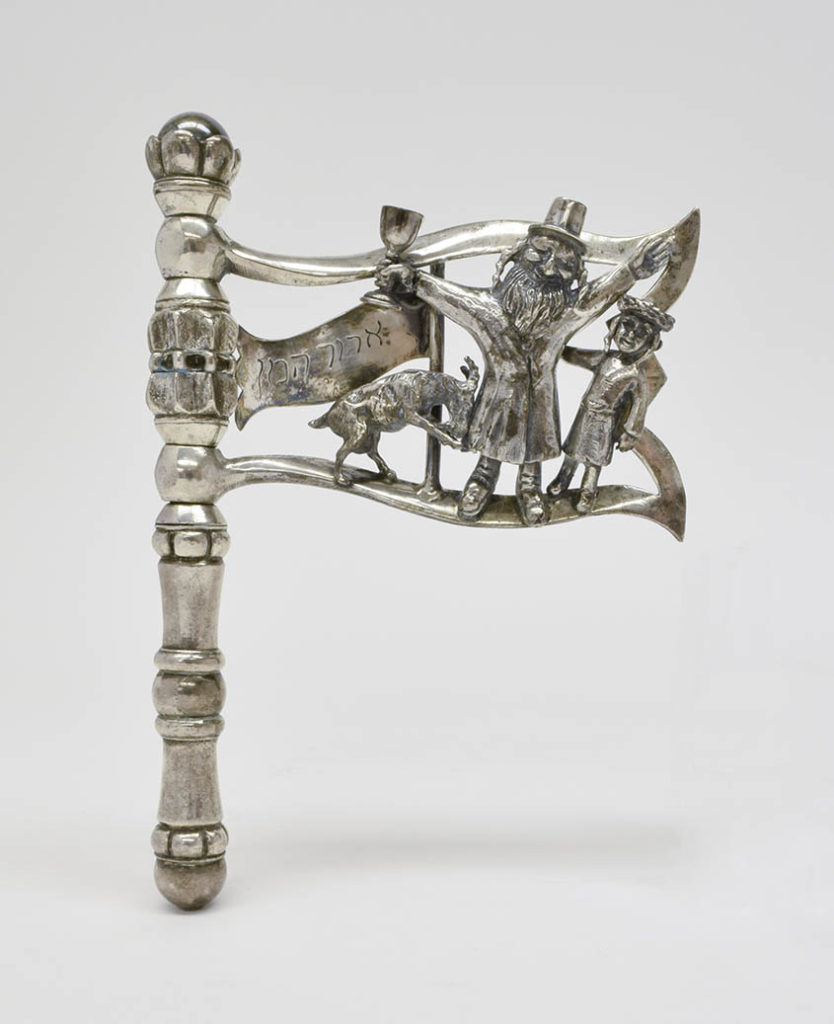Gragger (Noisemaker)
Peter Ehrenthal (1920-2022)
USA, 1960
Silver
B’nai B’rith Klutznick National Jewish Museum Collection, gift of Joseph B. and Olyn Horwitz,
1980, TAP 0072
The Jewish festival of Purim celebrates the continued resilience of the Jewish people. The Purim
story is related in the Book of Esther, a melodramatic tale of court intrigue in which King
Ahasuerus and his minister Haman plot to kill the Jews of Persia, but through the intervention of
Queen Esther and her cousin Mordechai, the plot is averted. Purim traditions include the wearing
of costumes, masks, eating and giving treats, and reading aloud the Purim story in the
synagogue. During the retelling of the story, the evil villain Haman is mentioned several times,
and in response the congregation shouts and uses noisemakers to blot out his name.
The custom of using noisemakers is found in the writings of Rabbi David Abudraham in 14th
century Spain. Abudraham wrote that there were customs of children drawing or writing the
name of Haman on a stone or a piece of wood and then banging them in order to erase Haman’s
name. This custom evolved into the practice of using graggers, or noisemakers. The word
“gragger” comes from the Yiddish language.
In this example, the gragger takes the form of a flag that rotates on its handle and makes noise
when turned. A central figure is a man wearing a party hat and holding a wine goblet. Wine plays
an important part in the Purim story, as Jews are instructed to “drink until the difference between
good (Mordechai) and evil (Haman) connect be discerned!” To his right is a butting goat,
representing inappropriate behavior. To the drinking man’s left is a yeshiva (Jewish seminary)
student, representing goodness and piety. The Hebrew on the banner reads ACCURSED
HAMAN.
Ehrenthal emigrated from Romania to Israel, and eventually settled in New York. He was a
silversmith, and a collector of Judaica, and owned Moriah Galleries based in New York City,
which was in business from 1957 to 2015.

